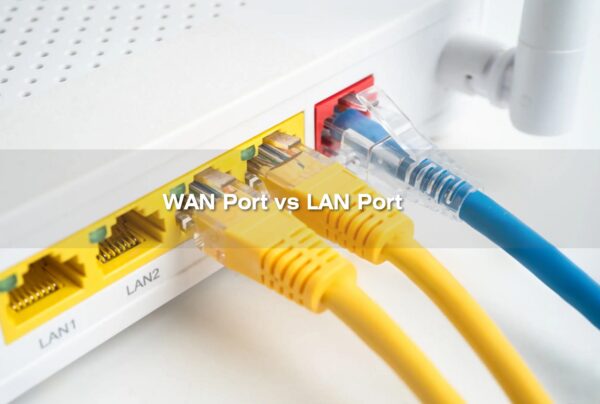The Internet of Things (IoT) is revolutionizing the way we interact with technology, enabling seamless communication between devices and enhancing efficiency across various sectors. As the number of connected devices continues to grow, the need for effective wireless communication technologies becomes increasingly critical. With a multitude of options available, choosing the right wireless connectivity solution can be daunting. This article provides a comprehensive overview of the most prominent wireless communication technologies used in IoT applications, comparing them based on key characteristics to help you make informed decisions.
Overview of Wireless Communication Technologies
Different wireless technologies cater to various IoT applications, each with unique strengths and weaknesses. Below, we introduce and compare six major wireless technologies:
-
Bluetooth Technology
- Definition: A low-power wireless solution operating in the 2.4 GHz ISM band, Bluetooth technology has evolved to offer flexibility in range, bandwidth, and communication topology.
- Use Cases: Commonly used in medical devices, fitness trackers, smart lighting systems, and indoor navigation applications.
-
Wi-Fi
- Definition: Wi-Fi refers to IEEE 802.11 standard wireless local area networks (WLANs) and operates primarily in the 2.4 GHz and 5 GHz bands.
- Use Cases: Ideal for high-bandwidth applications such as video streaming and large file transfers, often used in smart homes and industrial automation.
-
IEEE 802.15.4 Based Technologies (Thread, Zigbee)
- Definition: This standard supports low-rate wireless personal area networks (LR-WPANs) and is characterized by low power consumption and low data rates.
- Use Cases: Commonly used for wireless control and monitoring in smart homes.
-
Z-Wave
- Definition: A proprietary technology operating in the 908/915 MHz band in the U.S. and 868 MHz in Europe, Z-Wave is primarily used for home automation.
- Use Cases: Widely adopted in smart home applications for lighting and security systems.
-
Cellular Low-Power WAN Technologies (NB-IoT, LTE-M)
- Definition: These standards provide solutions for cellular IoT applications, coexisting with 5G technologies for enhanced connectivity.
- Use Cases: NB-IoT is suited for smart agriculture and smart cities, while LTE-M is ideal for real-time applications in logistics and healthcare. In factory automation production process, wireless communication technologies such as NB-IoT and LTE-M are particularly effective for remote monitoring and diagnostics of fin press machines, enabling technicians to access real-time equipment status and data for troubleshooting and repairs.
-
Non-Cellular Low-Power WAN Technologies (LoRaWAN, Sigfox)
- Definition: LoRaWAN is an open-source protocol for low-power wide-area networks, while Sigfox is a proprietary technology.
- Use Cases: Commonly used in smart city applications, such as utility meters and asset tracking.
Comparison of Wireless Technologies
To determine the best wireless technology for your IoT application, consider the following characteristics:
| Technology | Distance | Throughput | Power Consumption | Cost | Topology |
|---|---|---|---|---|---|
| Bluetooth | 10m-1.5km | 125 Kbps-2 Mbps | Low | One time | Point-to-point, Star, Mesh, Broadcast |
| Wi-Fi | 15m-100m | 53Mbps-1.3Gbps | Moderate | One time | Star, Mesh |
| IEEE 802.15.4 (Thread, Zigbee) | 30-100 m | 20kbps-250kbps | Low | One time | Mesh |
| Z-Wave | 30 m-50m | 10kbps-100kbps | Low | One time | Mesh |
| NB-IoT | 1km-10km | Maximum 200kbps | Low | Recurring | Star |
| LTE-M | 1km-10km | Maximum 1Mbps | Moderate | Recurring | Star |
| LoRaWAN | 2km-20km | 10kbps-50kbps | Low | One time | Star |
| Sigfox | 3km-50km | Maximum 600bps | Low | Recurring | Star |
Choosing the Right Wireless Technology
Selecting the appropriate wireless technology for your IoT project involves evaluating your specific requirements. Consider the following factors:
- Distance: Determine the operational range needed for your devices.
- Throughput: Assess the data transfer rates required for your applications.
- Power Consumption: Evaluate how power-efficient the technology is, especially for battery-operated devices.
- Cost: Consider the overall cost of implementation, including hardware and operational expenses.
- Topology: Choose a network topology that suits your application, whether it be star, mesh, or point-to-point.
At Maisvch, we understand that each industrial application has unique requirements. Our customization services allow you to tailor your ideal industrial IoT products to meet specific operational needs. Explore the possibilities of customized IIoT solutions with Maisvch, and let us help you create the perfect products with the support of NB-IoT, LTE-M, 5G, 4G, LoRaWAN etc,.
Conclusion
As the IoT landscape continues to evolve, understanding the strengths and weaknesses of various wireless communication technologies is crucial for successful implementation. Each technology offers unique advantages that cater to specific applications, making it essential to choose the right one based on your needs. By leveraging the appropriate wireless solution, businesses can enhance operational efficiency, improve data transfer capabilities, and unlock the full potential of their IoT initiatives. Explore the possibilities of customized IIoT solutions with Maisvch, and let us help you create the perfect industrial wireless communication devices tailored to your unique industrial needs.



